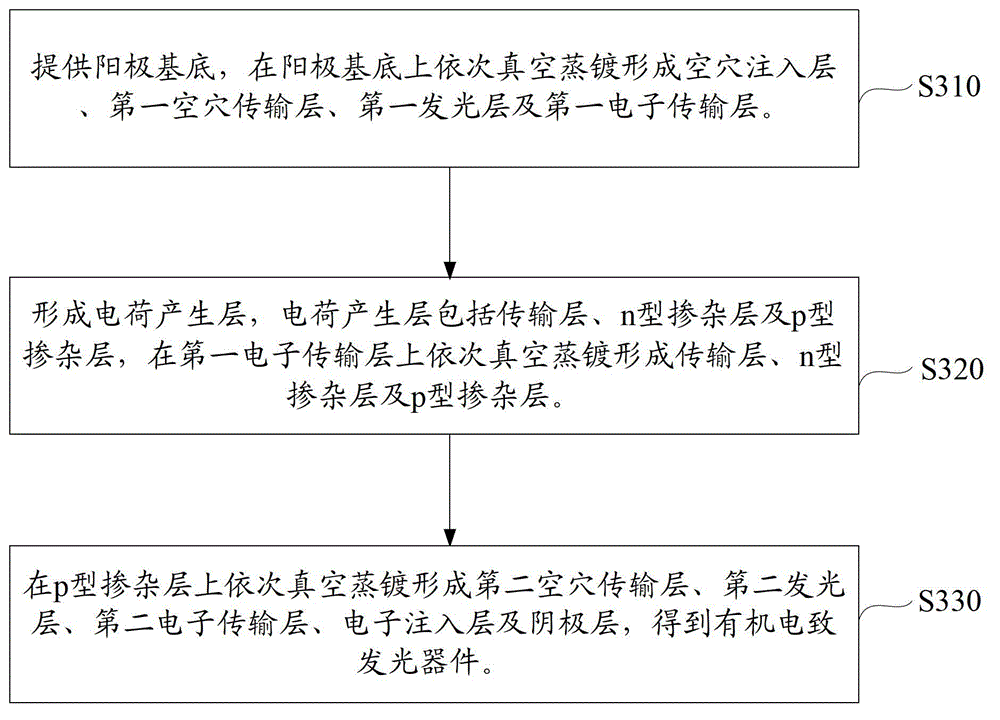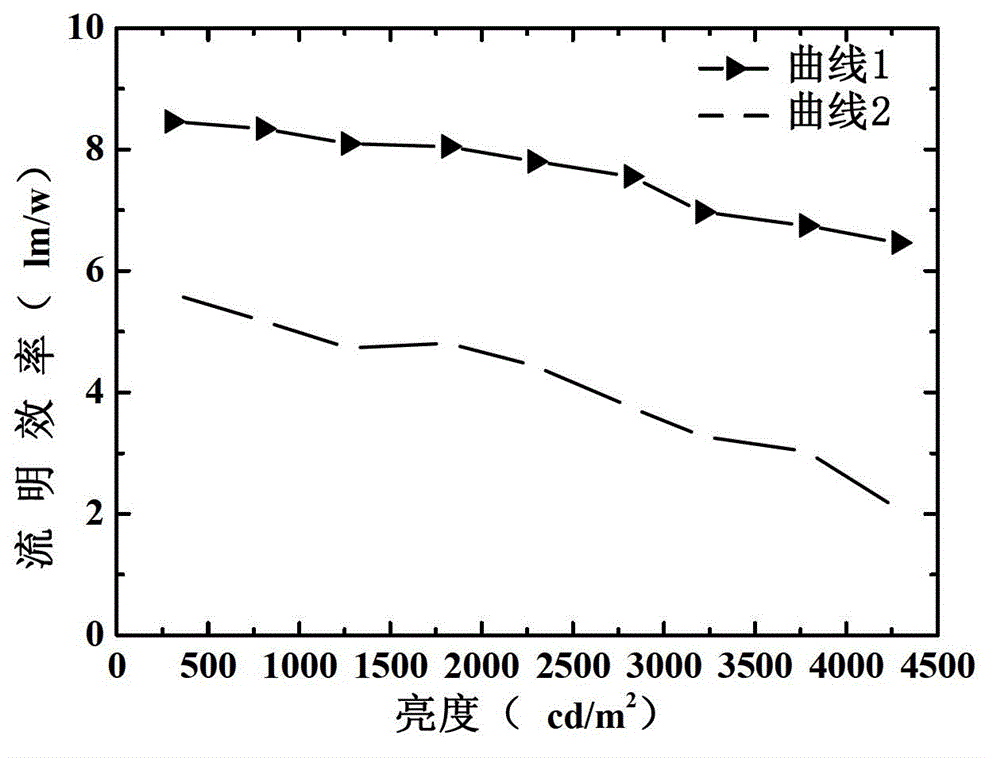Organic light emitting diode and preparation method thereof
An electroluminescent device, organic technology, applied in the direction of electric solid device, semiconductor/solid state device manufacturing, electrical components, etc., can solve the problem of low lumen efficiency, achieve lower interface contact barrier, high lumen efficiency, interface barrier reduced effect
- Summary
- Abstract
- Description
- Claims
- Application Information
AI Technical Summary
Problems solved by technology
Method used
Image
Examples
preparation example Construction
[0045] Such as figure 2 Shown, the preparation method of the organic electroluminescent device of one embodiment, comprises the following steps:
[0046] Step S310: providing an anode substrate, and sequentially vacuum-evaporating a hole injection layer, a first hole transport layer, a first light-emitting layer, and a first electron transport layer on the anode substrate.
[0047] Preferably, before the hole injection layer is formed by vacuum evaporation on the anode substrate, the step of sequentially performing photolithography, cutting and cleaning on the anode substrate is also included. The cleaning step is: ultrasonically clean the cut anode base in detergent, deionized water, propanol, ethanol and isopropanone in sequence, so as to remove organic pollutants on the anode base. Preferably, the time for each ultrasonic cleaning is 15 minutes.
[0048] Step S320: forming a charge generation layer, the charge generation layer includes a transport layer, an n-type doped ...
Embodiment 1
[0055] The structure of the organic electroluminescence device of the present embodiment is: ITO / WO 3 / NPB / Alq 3 / TAZ / Bphen / TAZ:Li 2 CO 3 / MoO3 :F4-TCNQ / TAPC / Alq 3 / TPBi / Cs 2 CO 3 / Ag.
[0056] The preparation of the organic electroluminescent device of this embodiment is as follows:
[0057] (1) Provide the ITO anode substrate. First, the ITO anode substrate is photolithographically processed and cut into the required size, and then the cut ITO anode substrate is sequentially placed in detergent, deionized water, propanol, ethanol and isopropyl ketone Ultrasonic cleaning for 15 minutes in order to remove organic pollutants on the ITO anode substrate.
[0058] (2) The hole injection layer, the first hole transport layer, the first light-emitting layer and the first electron transport layer are formed by vacuum evaporation sequentially on the ITO anode substrate: the material of the hole injection layer is tungsten trioxide (WO 3 ), the thickness is 40 nanometers; the m...
Embodiment 2
[0064] The structure of the organic electroluminescence device of the present embodiment is: AZO / V 2 o 5 / TCTA / BC Z VBi / TAZ / TPBi / Bphen:LiF / V 2 o 5 :2T-NATA / NPB / BC Z VBi / TPBi / CsN 3 / Pt.
[0065] The preparation of the organic electroluminescent device of this embodiment is as follows:
[0066] (1) Provide the AZO anode substrate. First, the AZO anode substrate is photolithographically processed and cut into the required size, and then the cut AZO anode substrate is sequentially placed in detergent, deionized water, propanol, ethanol and isopropyl ketone Ultrasonic cleaning for 15 minutes in order to remove the organic pollutants on the AZO anode substrate.
[0067] (2) On the AZO anode substrate, the hole injection layer, the first hole transport layer, the first light emitting layer and the first electron transport layer are formed by vacuum evaporation in sequence: the material of the hole injection layer is vanadium pentoxide (V 2 o 5 ), the thickness is 80 nanomete...
PUM
 Login to View More
Login to View More Abstract
Description
Claims
Application Information
 Login to View More
Login to View More - R&D
- Intellectual Property
- Life Sciences
- Materials
- Tech Scout
- Unparalleled Data Quality
- Higher Quality Content
- 60% Fewer Hallucinations
Browse by: Latest US Patents, China's latest patents, Technical Efficacy Thesaurus, Application Domain, Technology Topic, Popular Technical Reports.
© 2025 PatSnap. All rights reserved.Legal|Privacy policy|Modern Slavery Act Transparency Statement|Sitemap|About US| Contact US: help@patsnap.com



